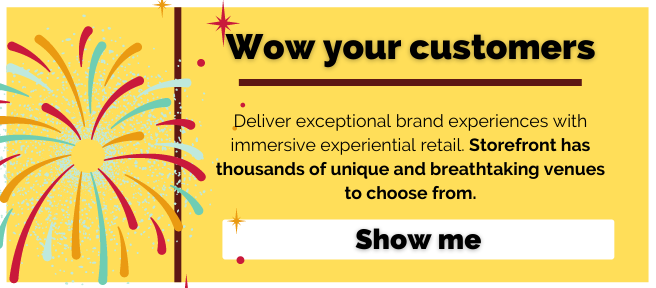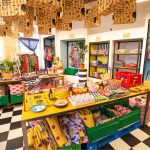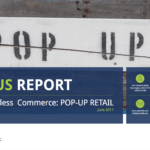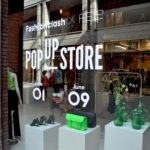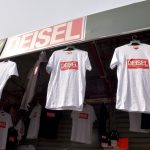What is a pop-up shop? Everything you need to know to try short-term retail > 23 Smart Pop-Up Shop Ideas to Steal From These Successful Brands > 9 Case Studies That Prove Experiential Retail Is The Future
What is experiential retail, and how can experiential retail benefit your business?
Experiential retail is a term used to define a type of retailing that aims to provide customers with a unique and memorable experience. Experiential retail is typically characterized by one or more of the following features: the use of unique and interesting spaces, objects, or experiences; high levels of customer engagement; and the use of technology to enhance customer interactions.
One key aspect of experiential retail is the ability to create an attractive and welcoming environment for staff and customers alike. This can be achieved through a combination of factors, including good design, cleanliness, and lighting. Another important factor is how well the store reflects its brand identity.
Although there are many different types of experiential retail outlets, they all share certain common elements: they are designed to provide a memorable experience for their customers; they are focused on creating an enjoyable atmosphere for staff members as well as the public; they offer an appealing mix of products and services, and they use technology to enhance customer interactions.
Finally, experiential retail is not just about selling products or services. It is also about building strong relationships with customers that go beyond transactions.
Experiential retail is the future. For years we’ve heard about the decline of physical retail and the rise of the internet. However, the desire for retail experiences is on the rise with 52% millennials saying of their spending goes on experience-related purchases. This introduces the concept of ‘retailtainment’.
Enter: retailtainment
Because of this, retailers have evolved their offerings. By focusing on so-called ‘ retailtainment’ and immersive retail experiences, brands are able to provide customers with fun, unique and in-person experiences that elevate shopping to new heights.
With retailtainment, the retail industry is shifting attention from a features-and-benefits approach to a focus on immersive shopping and customer experience. To be successful, retailers must offer consumers a desirable retail experience that in turn drives sales.
What is meant by Retailtainment?
The term “retailtainment” is used to describe the trend of retailers using entertainment to attract customers and encourage them to spend more time – and money – in their stores. This can take the form of in-store events, interactive displays, and even simply providing a comfortable and enjoyable environment for customers to shop in. The goal of retailtainment is to create a unique and memorable shopping experience that will keep customers coming back.
With the rise of online shopping and brick-and-mortar retailers have to work harder than ever to compete. By offering an enjoyable and entertaining shopping experience, retailers can attract customers who are looking for more than just a transaction. Retailtainment can be a powerful tool to build customer loyalty and drive sales.
How does retailtainment fit in today’s retail experiential strategy?
As shoppers’ expectations become more demanding, retailers are turning to retailtainment to create a more engaging and memorable shopping experience. By incorporating elements of entertainment into the retail environment, retailers can create a unique and differentiated customer experience that will help them stand out from the competition.
There are a number of ways that retailtainment can be used to improve the customer experience. For example, retailers can use interactive technology to create an immersive shopping experience that engages shoppers on a personal level. Additionally, retailers can use entertainment to add excitement and energy to their store environment, making it more inviting and enjoyable for shoppers.
Ultimately, retailtainment can play a key role in helping retailers create a customer experience that is unique, differentiated, and memorable.
What is the difference between retailtainment and experiential retail?
Both retailtainment and experiential retail are designed to make the shopping experience more enjoyable and engaging. However, experiential retail goes a step further by creating an emotional connection with customers. This emotional connection can lead to brand loyalty and repeat business.
Thus, while both retailtainment and experiential retail are important trends in the retail industry, experiential retail is more focused on creating a lasting impression and emotional connection with customers.
Here are our 8 favorite examples of Experiential Retail and retailtainment in action:
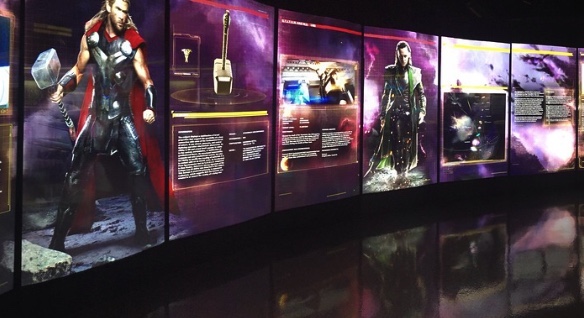
Marvel: Avengers S.T.A.T.I.O.N provides fans with interactive brand building experience
The Avengers S.T.A.T.I.O.N. is an immersive exhibit that has toured the world since the first Avengers film. It has appeared in key retail areas such as New York Seoul Paris , Beijing, London and Las Vegas, and always pulls in huge crowds. Based on the global box-office film franchise, Marvel’s The Avengers, the store features real life movie props and interactive displays.
There are Marvel-branded items for sale but the goal of the project is not to shift T-shirts and mugs. It is about delivering an in-person experience to fans and bringing the brand to life.
The Avengers S.T.A.T.I.O.N. is a great example of retailtainment and experiential retail in action. Visitors are fully immersed in the fictional world they adore, further cementing their affiliation and love for the Marvel brand.
For a brand as strong and iconic as Marvel, it would be easy to sit back and take popularity for granted. However, through the use of retailtainment they are continuing to delight their customers beyond the screen.
Farfetch: Creating a retail experience of the future
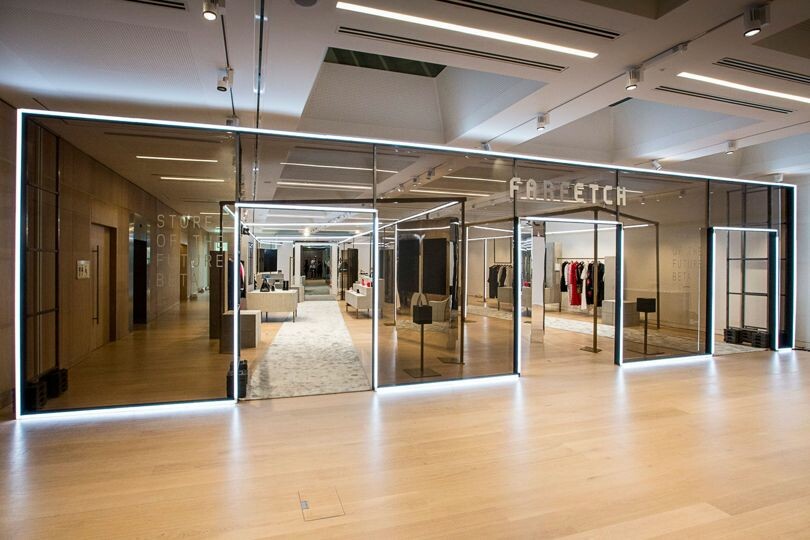
Image via Bloomberg
Farfetch is as an e-commerce portal for luxury boutiques. It’s successfully positioned itself as a technology provider for brands; combining technology and fashion to provide unique in-store experiences.
José Neves, CEO of Farfetch, has spoken about his concern that physical retail is diminishing; it accounts for 93 per cent of sales today, but by 2025 is predicted to account for just 80 per cent.
Enter: Farfetch’s Augmented Retail Solution
Neves’ vision for retailtainment includes advancements in technology to make the consumer experience more human. He produced Farfetch’s Store of the Future, an augmented retail solution that “links the online and offline worlds, using data to enhance the retail experience.” In its retail store in London, Farfetch provided connected clothing racks, touch-screen-enhanced mirrors and sign-in stations that pulled data collected online to use in-store.
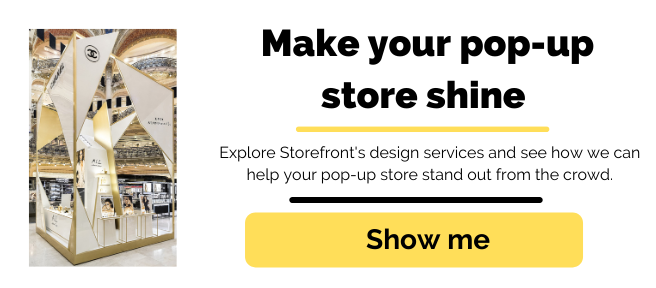
Farfetch provided customers with a sign-in screen to search their purchase history and wish list, which provided valuable customer insight for the sales assistants. There was also a smart mirror to request different sizes, alternative products or pay without leaving the dressing room.
This innovation led them to be labeled as “ The Retailer of the Future ”, allowing customers to enjoy an effortless in-person experience that harmonizes the best parts of boutique shopping with the speed and convenience of online shopping.
Read More: Excess Inventory Post-Holiday? Open a Pop-Up Shop
Huda Beauty: Cosmic experience in Covent Garden
Huda Beauty, one of the world’s fastest-growing beauty brands, ran an immersive retail experience pop-up store right in the centre of Covent Garden, London, to launch a new product range and reach new customers.
Huda used the location (sourced by Storefrontpop up space rental) to deliver a sci-fi themed experience in support of their new eye-shadow palette Mercury Retrograde.
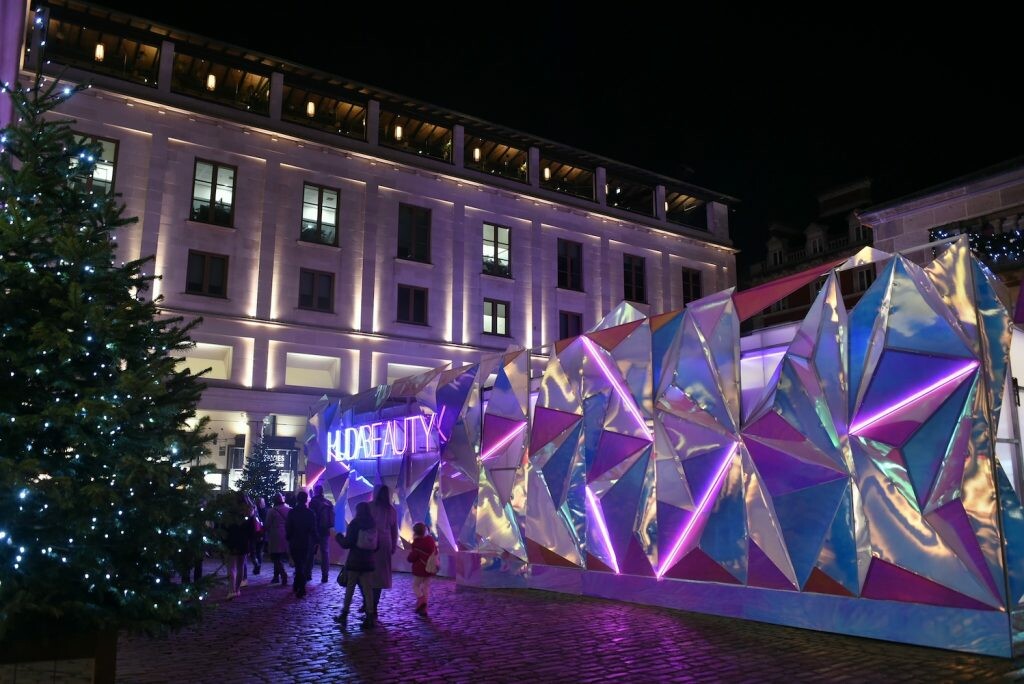
The entire exterior of the pop-up resembled a multi-faceted, metallic mass of geometrical shapes. This was echoed inside with various ‘galactic’ elements, all manner of mirrored surfaces and shimmering fixtures and elements.
As part of the event, visitors could sit on the throne Huda used in her launch material, all set up to encourage as much social media activity and engagement as possible.
Huda Beauty caught the eye and wowed its visitors. Introducing a whole swathe of new customers to the Huda Beauty brand.
Read More: 4 Beauty Brands Who Successfully Launched A Pop-Up Store
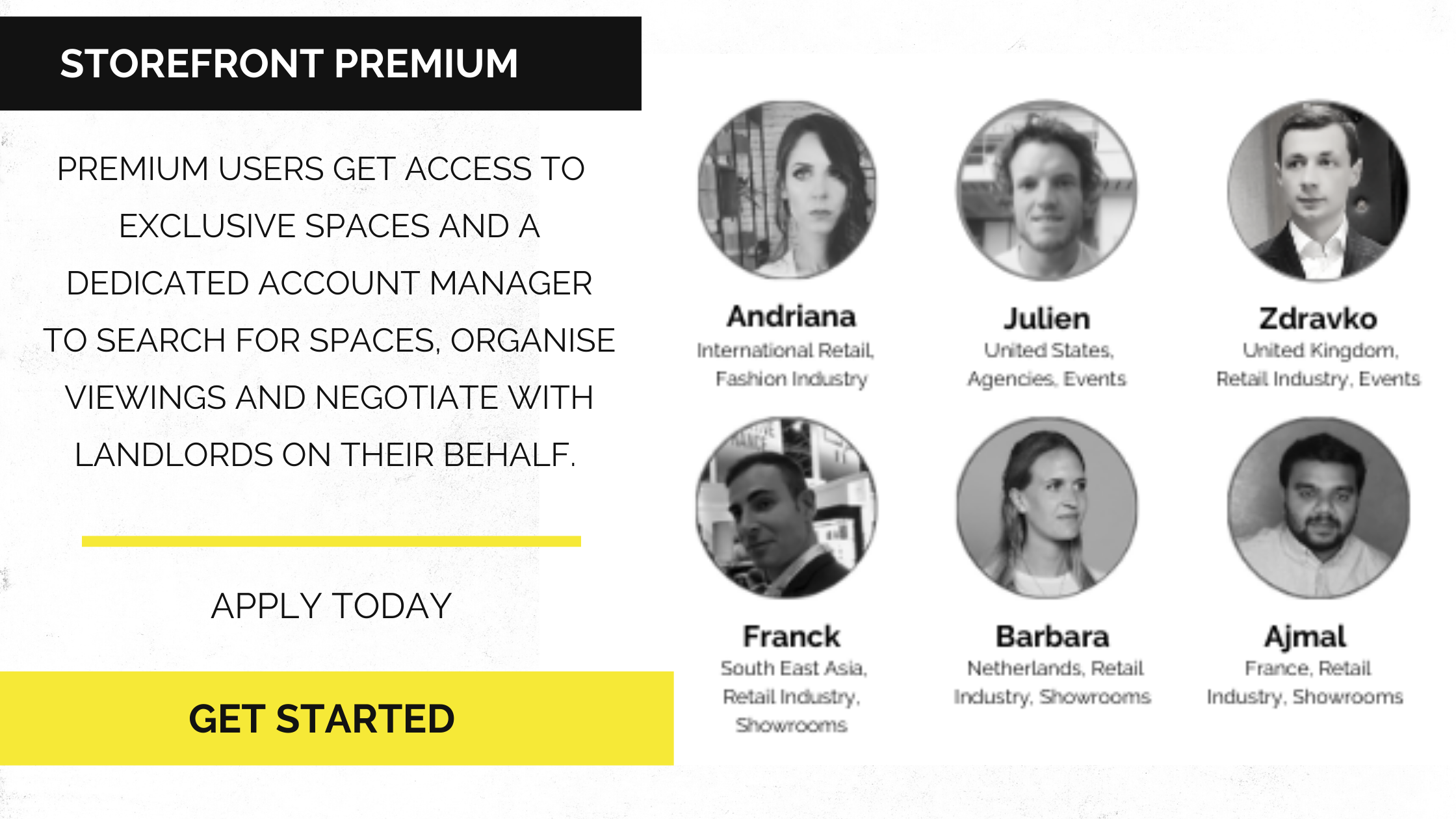
Vans: A shopping experience to remember
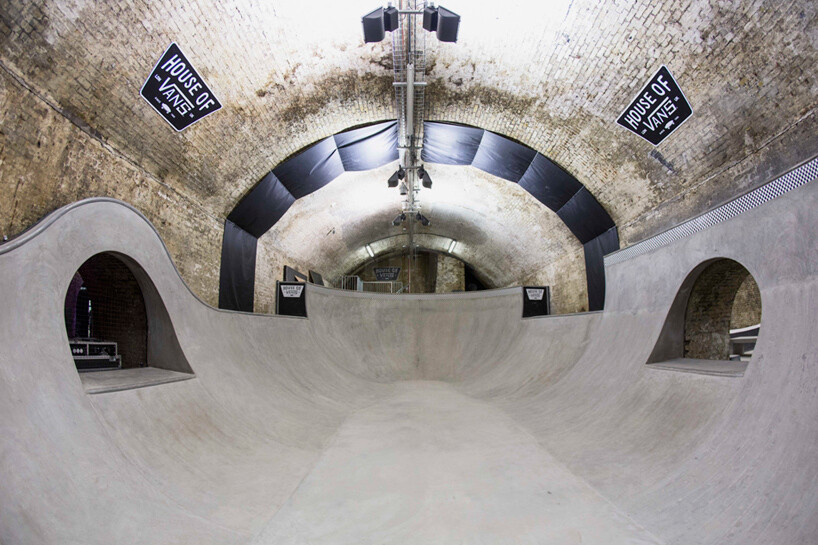
Image via Skateparks
The House of Vans in London lives up to the company motto of being “off the wall”. A location where art, music, BMX, street culture and fashion converge, you can find almost everything you can imagine across the 30,000 square feet building. Amongst a cinema, café, live music venue and art gallery, the bottom floor holds the most unique feature of the building: the concrete ramp, mini ramp and street course.
Nothing better epitomizes the Vans brand than a space where young people can not only shop but spontaneously socialize. The House of Vans is the perfect example of how experiential retail can be used to empower a shopping experience.
Read More: How The Music Industry Is Making The Most of Pop-Up Stores
Ikea: Using social media to power a unique retail experience
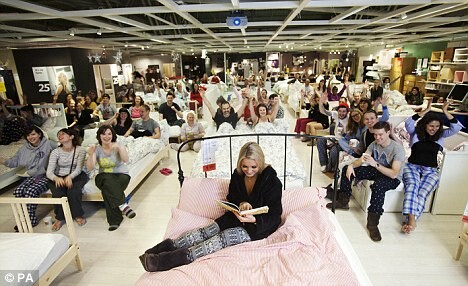
Ikea brought 100 Facebook competition winners to one of its warehouses and let them stay the night. They were able to select the mattress, sheets and pillows to fully give them a fully tailored experience. A sleep expert was on hand with tips for getting a good night’s rest, including how to find the perfect mattress for any sleeping style.
This was a clever and unique way to obtain visibility and get fans to focus on what Ikea has to offer and try it out for themselves.
This idea came from understanding their consumer insights on social media. Lois Blenkinsop, Ikea’s U.K. PR and internal communications manager, said: “Social media has opened up a unique platform for us to interact directly with our customers. Listening to what they want is what we do best, and the Big Sleepover is just one example of how we’re using such instant and open feedback to better inform our marketing activity.”
From using social media they were able to apply experiential marketing to their retail strategy and provide their customers with a memorable event that brought the brand a ton of visibility and engagement.
Space Ninety 8: showcasing the art of retailtainment
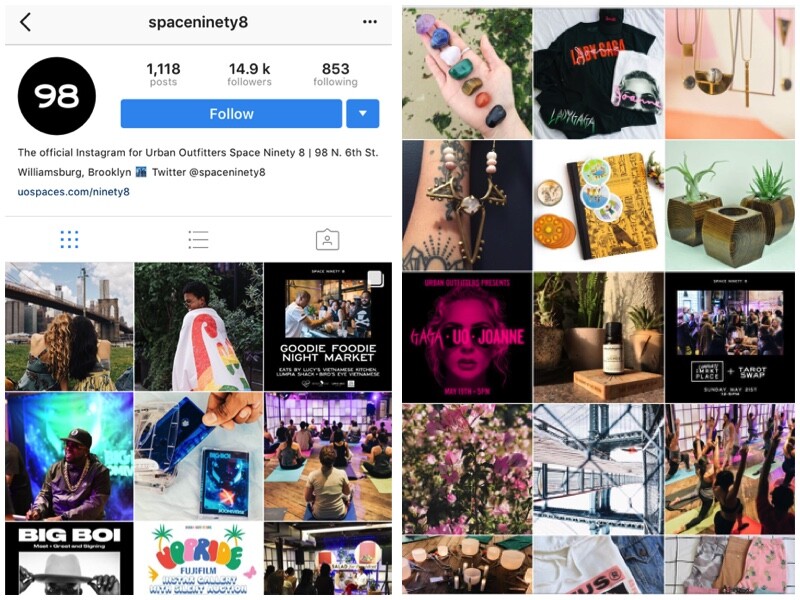
Image via @Space90
As a spin-off from Urban Outfitters, Space Ninety 8 is a shared retail space that spans 5 floors, hosting retailers, galleries and even a rooftop restaurant and bar.
Scanning their Instagram, you can see the variety of what Space Ninety 8 offers beyond solely retail. Advertised next to yoga classes is an album signing by Big Boi, alongside pictures of art classes and Lady GaGa merchandise. By reflecting the flexible nature of modern life, the brand created a versatile store that emphasizes experience, perfecting the art of retailtainment.
TOMS: creating an immersive experience through VR
Experiences don’t have to be a permanent feature of a store in order to make an impact on customers. In 2015 TOMS’ placed VR headsets into 100 stores, enabling them to virtually transport players to Peru to see the impact of their One for One giving campaign on local people.
As you walk through the village stores with locals smiling and waving at you, it is impossible not to feel warmed by the friendly atmosphere. Not only did this retail experience improve awareness of their social corporate responsibility and promote their giving campaign, it also gave customers an unforgettable and immersive experience they were unlikely to forget.
[Check out Toms’ continued focus on immersive retail experiences here]
How to Provide Retailtainment that Drives Traffic and Sales
These case studies all stress the importance of providing an in-store experience. By exceeding expectations you drive emotional reactions. There are five consistent elements each use in their stores to ensure a remarkable customer shopping experience:
- Interactiveness: All of these retailers ensure that the senses are connected – memories of what we feel, hear, see, smell, and touch, may last a lifetime.
- Originality: These ideas were all authentic and natural, making the customer feel as if they entered a different world.
- Connectedness: Customers must feel that the experience has been created for them.
- Unexpectedness: These unique experiences are critical to ensure your brand is remembered.
- Reliability: The experience is executed through tested methods to achieve consistency and excellence.
The future of experiential retail
As the world of retail continues to evolve, so too must the way brands create memorable experiences for their customers. With the rise of digital and mobile technologies, consumers now have more choices than ever before when it comes to how they shop and what they buy. To stay ahead of the curve, brands must find new and innovative ways to engage with their customers and create unforgettable shopping experiences.
One way to do this is through experiential retail – using physical spaces to create immersive, one-of-a-kind experiences that cannot be replicated online. This could involve anything from in-store events and workshops to augmented reality and virtual reality experiences.
Experiential marketing isn’t about spending millions on fancy gadgets for your retail store. Sure it can help, but it’s mostly about a personalized shopping experience and providing an unparalleled retail experience for your guests and customers. The brands that delight their customers are the brands that drive loyalty and advocacy. Couple this with excellent customer service and you’re on to a winner. These case studies all demonstrate how it is possible to follow similar steps to overcome the challenges eCommerce has brought.
The brands that use their physical stores to focus on the customer experience are the brands that will do the best. The dynamic between physical and online retail has shifted and the impact of the Covid 19 pandemic has only accentuated this.

Planning your own experiential retail project and need some help? Drop us a note and we’ll help you out.
For more on launching temporary retail stores and one-off events, download our Ultimate Pop-Up Guide and make your ideas happen.

